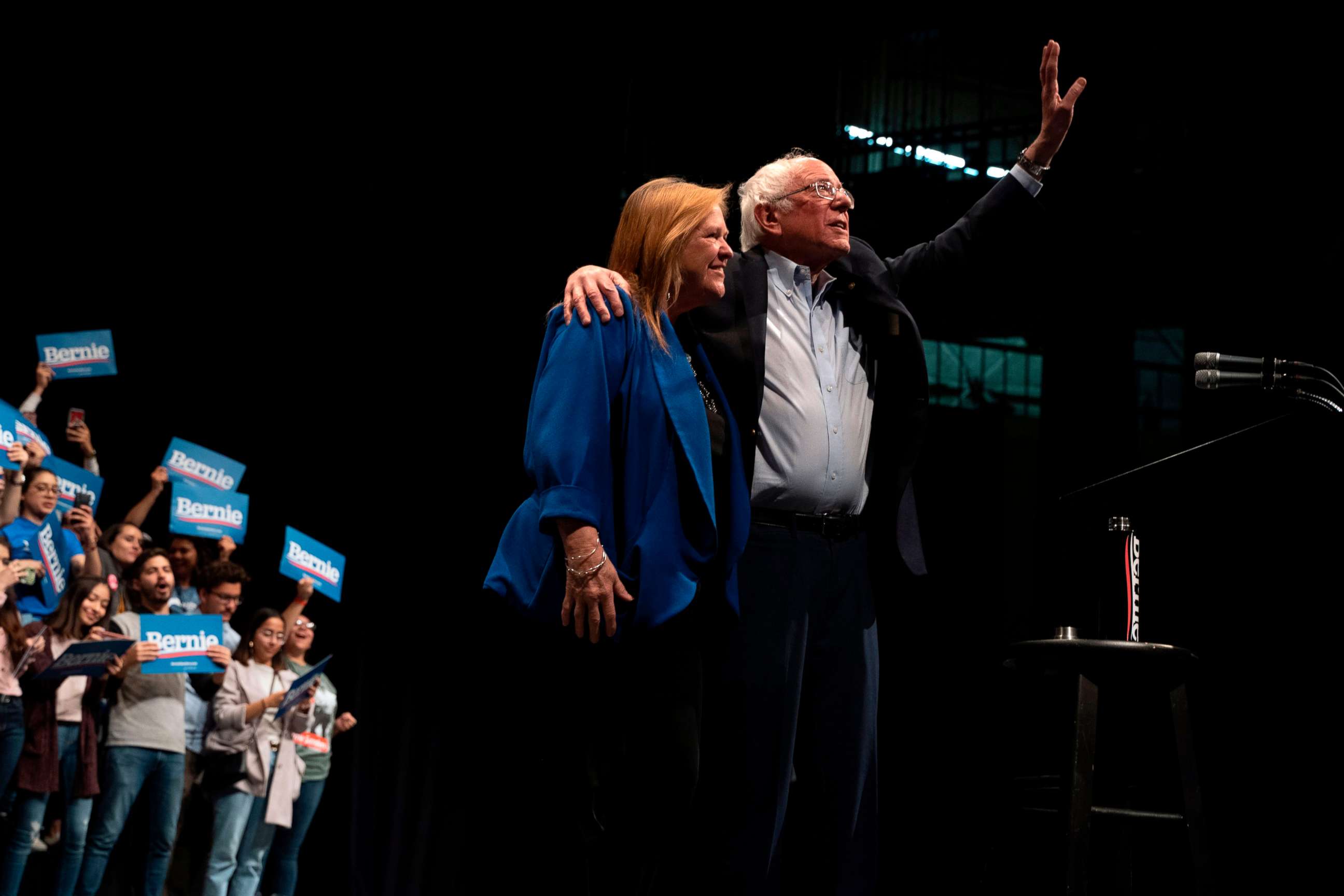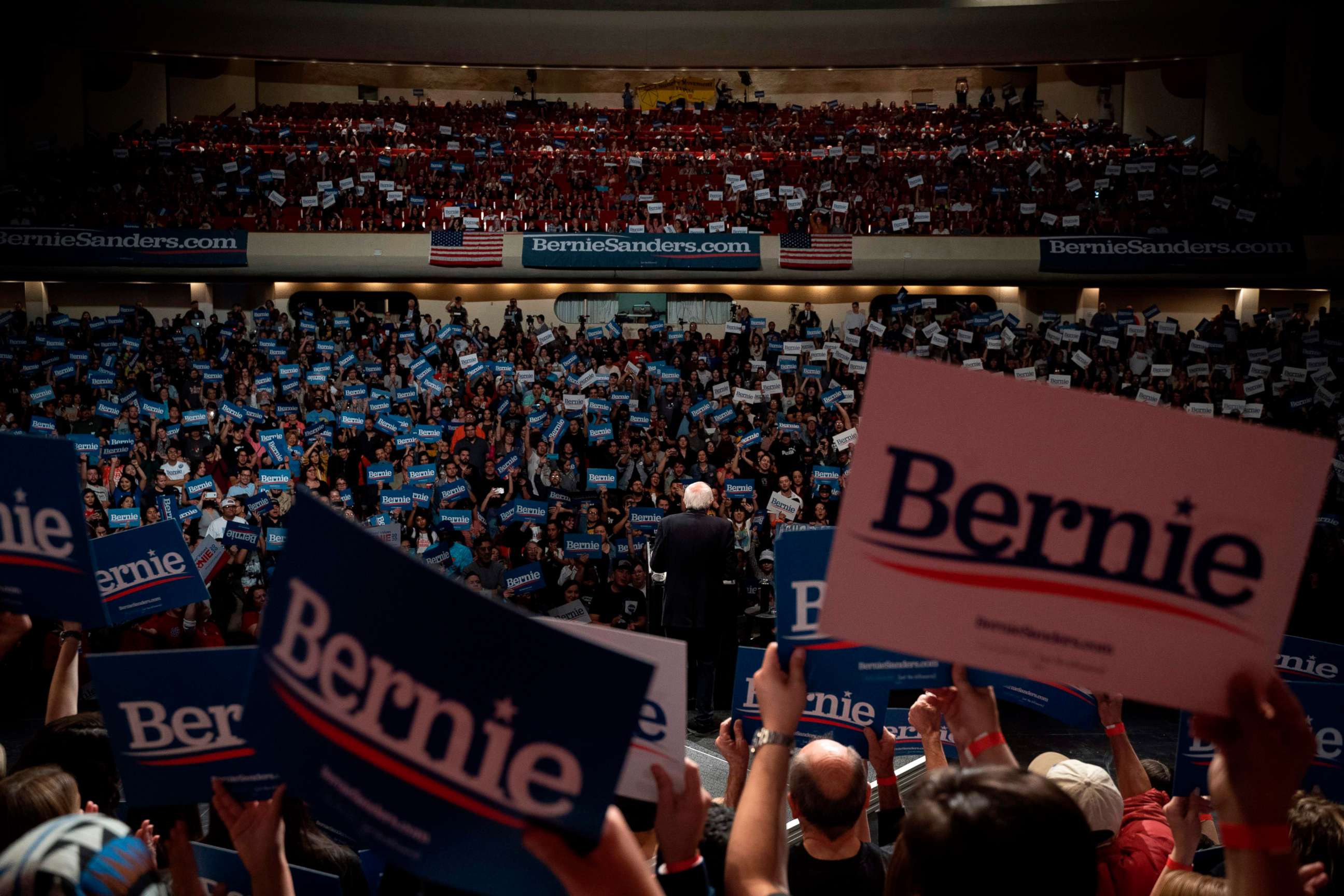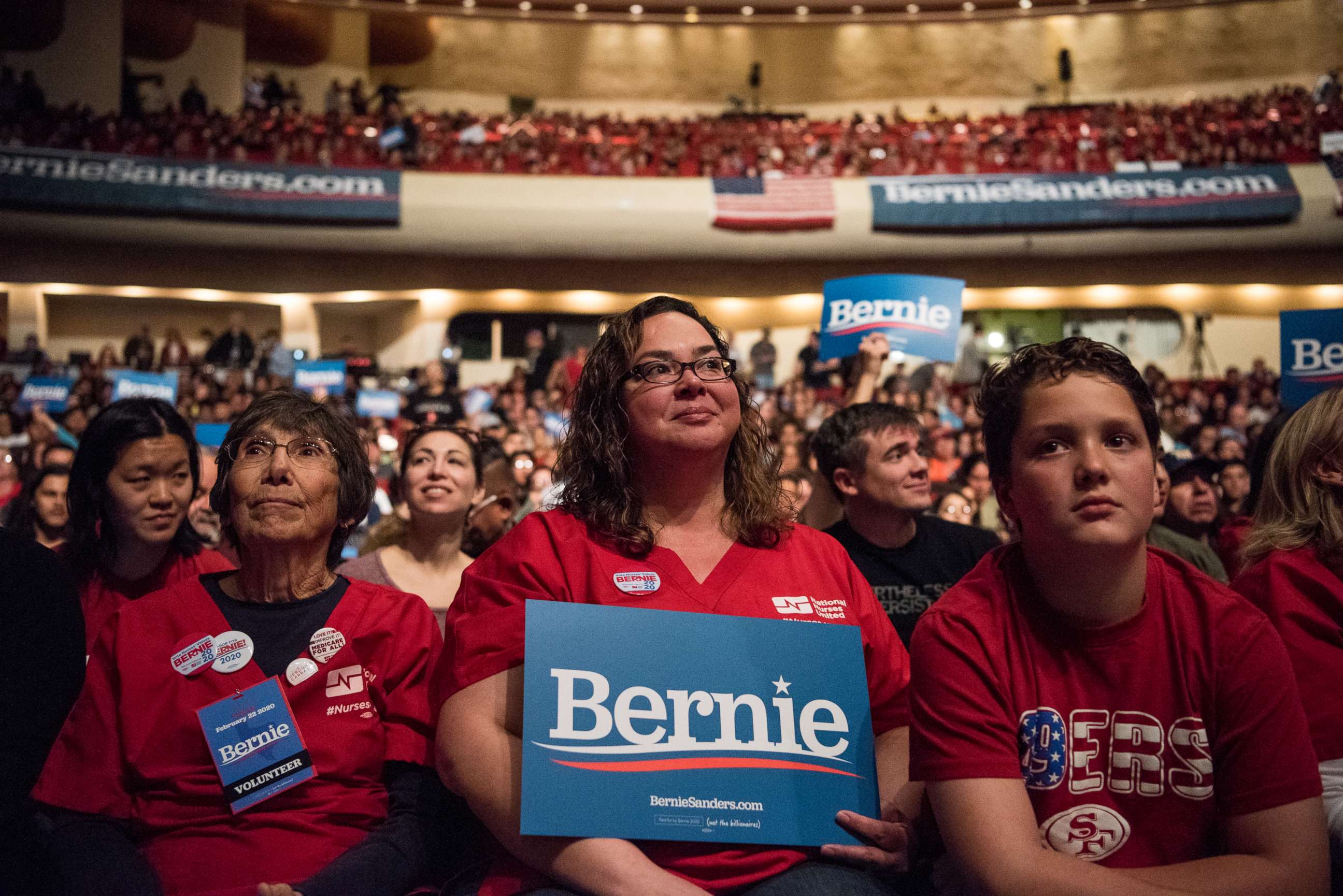With help from Latino voters, Bernie Sanders hits the Nevada jackpot
Sanders also ran competitively in the state among unaccustomed support groups.
Sen. Bernie Sanders ran competitively in unaccustomed support groups amid the Nevada Democratic caucuses while sweeping the table among Latino, young and very liberal voters, leaving his competitors wrestling inconclusively over the sharply fragmented remains, according to ABC News' entrance poll results.
Latinos joined the Sanders brigade in Nevada, the most diverse state to participate so far, giving him 51% of their votes, a vast tally in a seven-candidate race. Sanders fell off sharply among blacks, to 27% -- yet that was good enough for second place to former Vice President Joe Biden’s 39% among blacks, Biden’s single best group. The Vermont senator won 29% of whites, easily first in this group,
Sanders won half of independent caucusgoers in the Silver State on Saturday, a core support group in his 2016 race against former Secretary of State Hillary Clinton. Yet he won Nevada Democrats as well, with 31% support. While seven in 10 mainline Democrats voted for someone else, no other individual candidate won more than 20% of their votes, well under Sanders’ tally among party regulars.

Further, Sanders won half of very liberal caucusgoers and 29% of "somewhat" liberals, prevailing in both groups. Yet he also ran competitively among moderates, with 22% support near Biden, with 25% and former South Bend, Indiana mayor Pete Buttigieg, with 20%.
Sanders did better among moderates and Democrats in Nevada than in Iowa or New Hampshire.
The results in some respects are similar to the 2016 Republican contests, when President Donald Trump fell short of majority support until mid-April, but maintained a plurality in most contests while his opponents divided the rest.
As in Iowa and New Hampshire, caucusgoers far and away cited health care as their top issue -- 44% placed it first among four issues tested -- and Sanders won 38% support in this group. He won 48% among the majority who support a government-run, single payer health system. And he pulled 41% among those most concerned with income inequality, another signature issue.
Sanders ran about evenly with Biden among the majority of caucusgoers -- with 66% -- who said they care more about beating Trump than about supporting the candidate who agrees with them on major issues. Twenty-three percent in this group backed Sanders, compared with 21% for Biden, 17% for Buttigieg and 10 to 13% apiece for Minnesota Sen. Amy Klobuchar, Massachusetts Sen. Elizabeth Warren and Businessman Tom Steyer.

On the flip side, among those most focused on choosing the candidate who aligns with them on major issues, Sanders soared to 54% support.
The Nevada caucusgoers made up their minds comparatively early; among those who voted Saturday -- excluding early voters -- just 13% say they finally chose their candidate in the last few days, compared with 36% in Iowa and 51% in New Hampshire. This at least in part reflects the fact that Nevadans were the first to have the ability to vote early, from Feb. 15-18.
Sanders did especially well, 47% support, among nearly half of voters who decided before January.
The Nevada electorate was more diverse and more liberal than in Iowa or New Hampshire. Whites accounted for 65% of participants, compared with about 90% in the first two states. Latinos accounted for 19% of Nevada participants; blacks, 11%.
At the same time, entrance poll results indicated a decline in participation of racial and ethnic minorities. Nonwhites accounted for 35% of caucusgoers, compared with 41% in 2016.

Sanders won a thumping 57% support from voters younger than 45. He garnered far less support among those 45 and older, plummeting to 11% among seniors, in a narrow band with Buttigieg, Steyer and Warren.
Biden won seniors with 29%, followed by Klobuchar with 19%.
Sanders further won about half of those who described themselves as "very liberal"-- 30% of caucusgoers, compared with 25% in Iowa and 21% in New Hampshire.
By education, Sanders again did better with less-educated voters, winning 42% of those without a college degree vs. 27% of those with one.
Labor made more of an appearance than in the previous contests: 24% of caucusgoers were from union households, compared with 16% of New Hampshire primary voters. That said, their votes didn’t differ substantially than those from non-union households.
The Nevada entrance poll measured caucusgoers’ initial preferences; final results can differ since those whose candidate falls short of 15% get a second choice.




